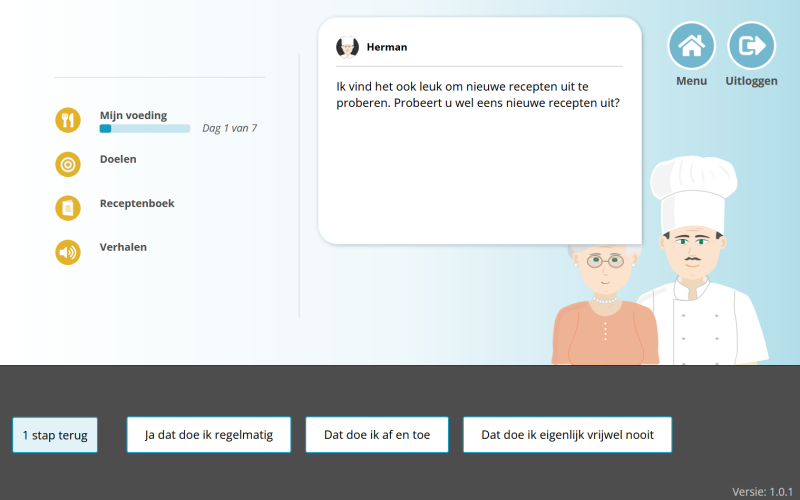By Lex van Velsen
In the past years, I (or rather, RRD) have participated in numerous projects in which we developed virtual agents for eHealth. Virtual agents that supported healthy eating, cognitive health, or supporting older adults in the mourning process after losing their spouse. In all of these projects, we have learned valuable lessons in the design, implementation and evaluation phase. In this article, I would like to share 7 lessons with you for designing virtual agents for eHealth.
- The more advanced its functionalities, the more human-like the appearance of the virtual agent should be. This is in line with the expectations of end-users, where the level of simplicity of the agent appearance should match what it does.
- Include humour in the dialogues, but not too much. A discussion with a virtual agent should be engaging. Humour can certainly help here, but too much humour will have a detrimental effect on the interaction. So joke with caution, and test the end result with potential end-users.
- Make sure that the most important UX aspects for virtual agents for health -‘usefulness’ and ‘enjoyability’- are taken care of. Virtual agents for health should do two things, be useful and engaging. This way, their effectiveness and efficiency are optimized, while end-users keep on using the service. Be sure to have a keen eye on usefulness and enjoyability during the design and testing process.
- Be cautious with making the virtual agent look like a peer, it induces bias. It is tempting to make the virtual agent look like a peer of the end-user. You can imagine it will instil feelings of trust and relatedness. However, for the case of older adults, we found out that this introduces ageism. Societal prejudices towards older adults were embodied in the virtual agent and not appreciated by test users.
- First impressions last. The first impressions that end-users have of a virtual agent will last months, and will thus affect both the short and long term interaction.
- First impressions of a virtual agent are shaped by two factors. The presence of positivity and attentiveness are the factors that, in first instance, predominantly make up whether or not an end-user takes a liking towards a virtual agent for the health context.
- More realistic virtual agents lead to more compliance. End-user are more willing to comply with advice given by a realistic agent than with advice given by, let’s say, a cartoonish agent.

Credit due where credit is due. Most of these lessons were the result of the hard work of some of our junior researchers. I would especially like to mention Silke ter Stal and Leonie Kramer here.
Did we inspire you to embed a virtual agent in your own eHealth service? Or do you want to improve your current virtual agent? Drop us a note, we would love to talk shop.